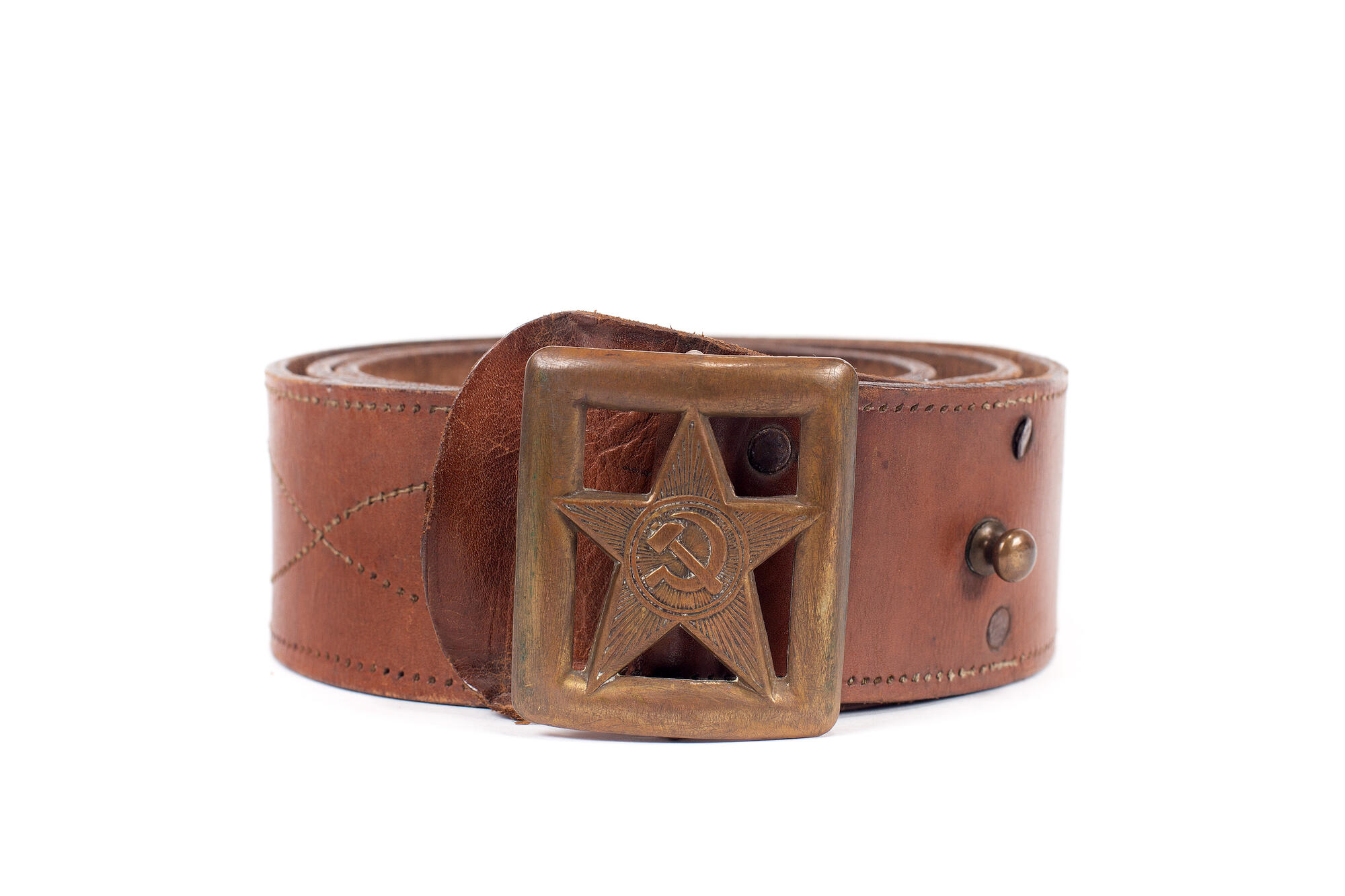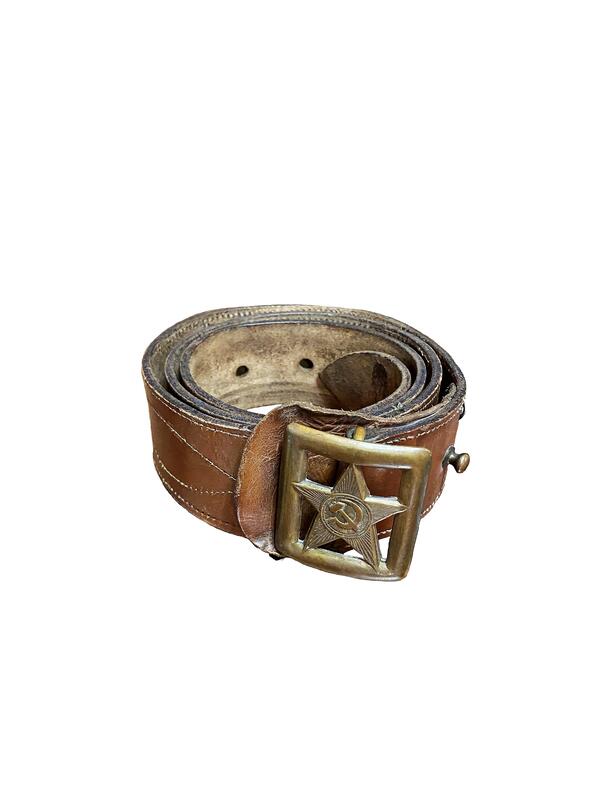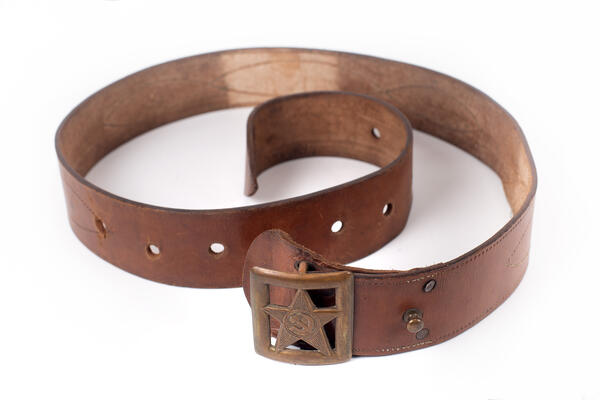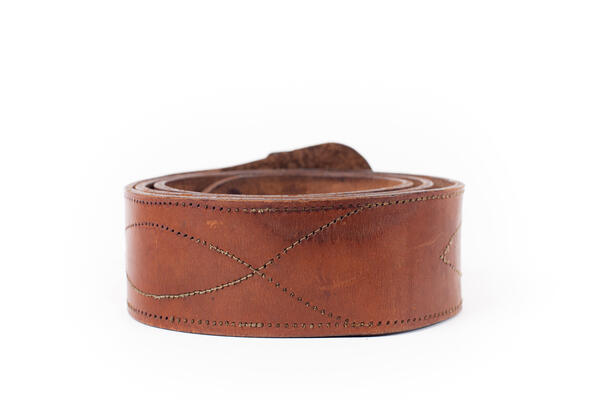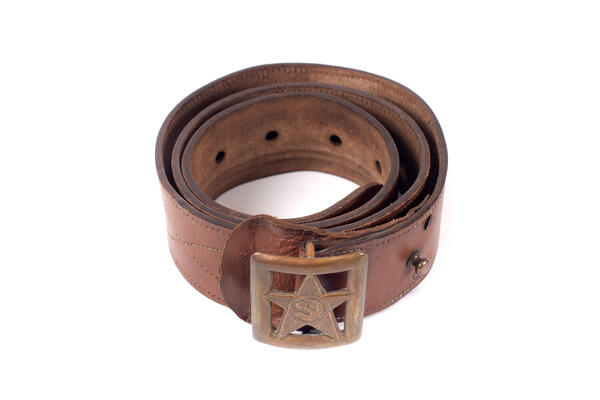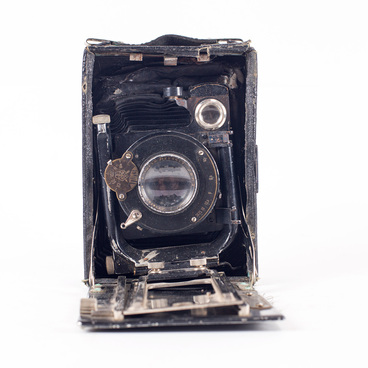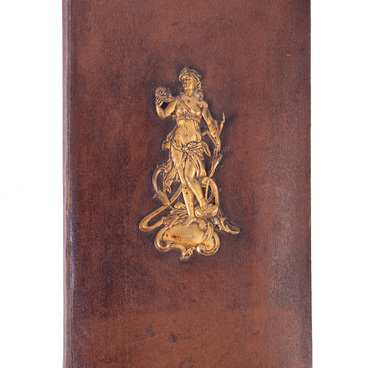Since ancient times, a belt has been an obligatory part of the attire of hunters and warriors. Army belts of the late 19th century were made from the so-called Russia leather — bark-tanned cow leather. A brass buckle was placed on the right and later moved more to the left. An emblem on the buckle indicated the serviceman’s rank and affiliation to a particular military branch: for example, officer’s buckles were always gold. According to the rules, the belt had to be always worn on top of the uniform with the buckle visible.
The army belt could be used for carrying the necessary equipment: a knife, an entrenching tool, a magazine, and a flask. To prevent the belt from being dislocated under the weight of the gear, it was secured with straps fixed on the shoulders. Each belt had to be adjusted to the height and weight of the suspensions, which required great skill. Although the belt was not easy to put on, it was a practical and necessary item in combat.
The army belt could only be black, white, or brown. Using other colors, patterns or engravings was prohibited. Usually, the belt is reinforced with a piece of leather called the back. Instead of holes, modern army belts use an automatic buckle that helps to adjust the length of the belt.
White army belts of the 1935 model were worn by cadets of all Soviet military schools. Cadets wore the belts only in combination with the full dress uniform. The belts were supposed to always be in pristine condition, and the buckles were polished to a shine with a special paste. The service life of a belt was longer than the military service of a soldier, so the items were stored in a warehouse supervised by a sergeant major.
A Soviet military belt buckle with a large five-pointed star was introduced in 1969. In the middle of the star is the symbol of the union between workers and peasants — the hammer and sickle. This emblem appeared after the 1917 revolution as a sign of the new state. The symbol of the hammer and sickle was under a star, on top of a globe in rays of the sun, surrounded by a wreath of grain. The original emblem also featured the inscription “Workers of the world, unite!” in six languages of the Soviet republics.
The army belt could be used for carrying the necessary equipment: a knife, an entrenching tool, a magazine, and a flask. To prevent the belt from being dislocated under the weight of the gear, it was secured with straps fixed on the shoulders. Each belt had to be adjusted to the height and weight of the suspensions, which required great skill. Although the belt was not easy to put on, it was a practical and necessary item in combat.
The army belt could only be black, white, or brown. Using other colors, patterns or engravings was prohibited. Usually, the belt is reinforced with a piece of leather called the back. Instead of holes, modern army belts use an automatic buckle that helps to adjust the length of the belt.
White army belts of the 1935 model were worn by cadets of all Soviet military schools. Cadets wore the belts only in combination with the full dress uniform. The belts were supposed to always be in pristine condition, and the buckles were polished to a shine with a special paste. The service life of a belt was longer than the military service of a soldier, so the items were stored in a warehouse supervised by a sergeant major.
A Soviet military belt buckle with a large five-pointed star was introduced in 1969. In the middle of the star is the symbol of the union between workers and peasants — the hammer and sickle. This emblem appeared after the 1917 revolution as a sign of the new state. The symbol of the hammer and sickle was under a star, on top of a globe in rays of the sun, surrounded by a wreath of grain. The original emblem also featured the inscription “Workers of the world, unite!” in six languages of the Soviet republics.
